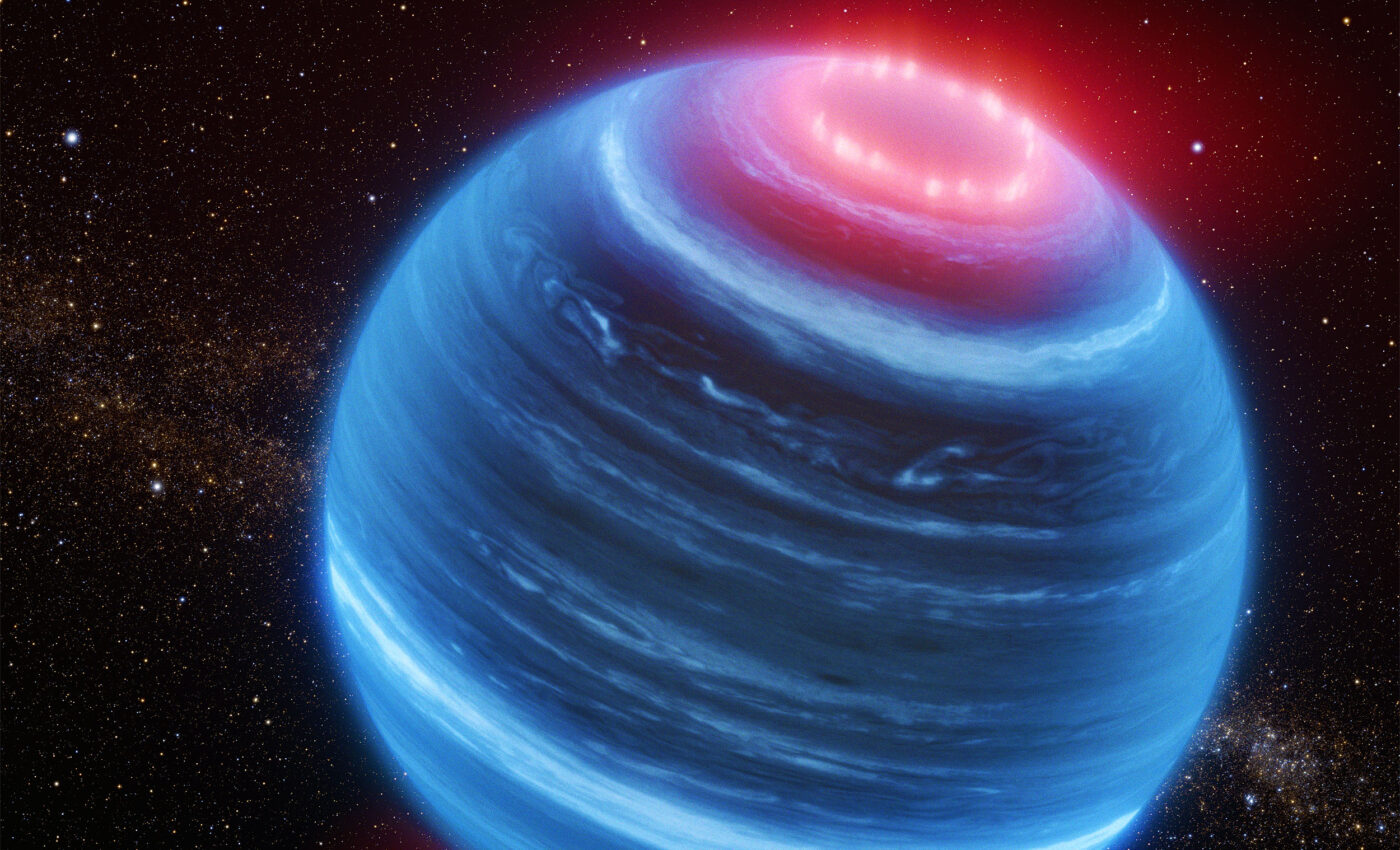
Cosmic enigma: Aurorae discovered on an isolated brown dwarf
In a remarkable discovery, astronomers using NASA’s James Webb Space Telescope have uncovered a cosmic enigma. They’ve identified a brown dwarf, known as W1935, that exhibits unusual infrared emission from methane that resembles an aurora.
This finding is noteworthy, particularly because W1935, a celestial body larger than Jupiter yet smaller than a star, is relatively cold and does not orbit a host star.
Brown dwarfs, methane emission, and aurorae
Typically, methane in emission is a feature observed in gas giants like Jupiter and Saturn, where the emission is fueled by aurorae.
Earthly aurorae, those beautiful and eerie lights, are created by solar particles interacting with our planet’s magnetic field.
Jupiter and Saturn experience similar processes, though they also receive contributions from their active moons.
However, for isolated brown dwarfs like W1935, the absence of a host star and, consequently, a stellar wind, makes the presence of this methane emission aurorae a real head-scratcher.
Webb’s brown dwarf aurorae revelations
The discovery of W1935’s aurorae unfolds like a cosmic detective story. Led by astronomer Jackie Faherty from the American Museum of Natural History in New York, the research team was initially allocated time on the Webb telescope to study 12 cold brown dwarfs.
Among these was W1935, discovered by citizen scientist Dan Caselden through the Backyard Worlds Zooniverse project, along with W2220, identified using NASA’s Wide Field Infrared Survey Explorer.
The Webb telescope, with its extraordinary detail, revealed that W1935 and W2220 are nearly identical in composition, sharing similar brightness, temperatures, and spectral features, including water, ammonia, carbon monoxide, and carbon dioxide.
However, the striking difference was W1935’s methane emission, a distinct infrared wavelength signature to which Webb is uniquely sensitive.
Jackie Faherty expressed surprise at this discovery, saying, “We expected to see methane because it’s common in these dwarfs. But instead of absorbing light, it was glowing. My first thought was, what the heck? Why is methane emission coming out of this object?”
Exploring theories and models
To unravel this mystery, the team employed computer models. These models indicated that while W2220 showed a typical atmospheric energy distribution, W1935 presented a temperature inversion — its atmosphere gets warmer with increasing altitude.
“This temperature inversion is really puzzling,” said Ben Burningham, a co-author from the University of Hertfordshire and the lead modeler.
“We have seen this kind of phenomenon in planets with a nearby star that can heat the stratosphere, but seeing it in an object with no obvious external heat source is wild.” without an external heat source.”
To find clues, the researchers looked closer to home, examining the planets in our solar system. They noted that temperature inversions are common in Jupiter and Saturn, often attributed to external heating by aurorae.
Aurorae: A common thread in cosmic observations
Aurorae have been previously suggested to explain observations in warmer brown dwarfs. While infrared signatures from these radio-emitting dwarfs have been elusive, W1935 stands out as the first extraterrestrial brown dwarf aurorae candidate with methane emission.
This brown dwarf is also significantly colder than similar celestial bodies, with an effective temperature of about 400 degrees Fahrenheit (200 degrees Celsius), warmer than Jupiter but still remarkably cool.
W1935 represents a unique instance of a solar system phenomenon occurring without the influence of a star.
As Faherty notes, “With W1935, we now have a spectacular extension of a solar system phenomenon without any stellar irradiation to help in the explanation.”
“With Webb, we can really ‘open the hood’ on the chemistry and unpack how similar or different the auroral process may be beyond our solar system,” she added.
In summary, the Webb telescope continues to provide invaluable insights, allowing astronomers to ‘open the hood’ on celestial chemistry and explore how auroral processes may operate beyond our solar system.
These findings are being presented at the 243rd meeting of the American Astronomical Society in New Orleans.
—–
Like what you read? Subscribe to our newsletter for engaging articles, exclusive content, and the latest updates.
Check us out on EarthSnap, a free app brought to you by Eric Ralls and Earth.com.
—–













